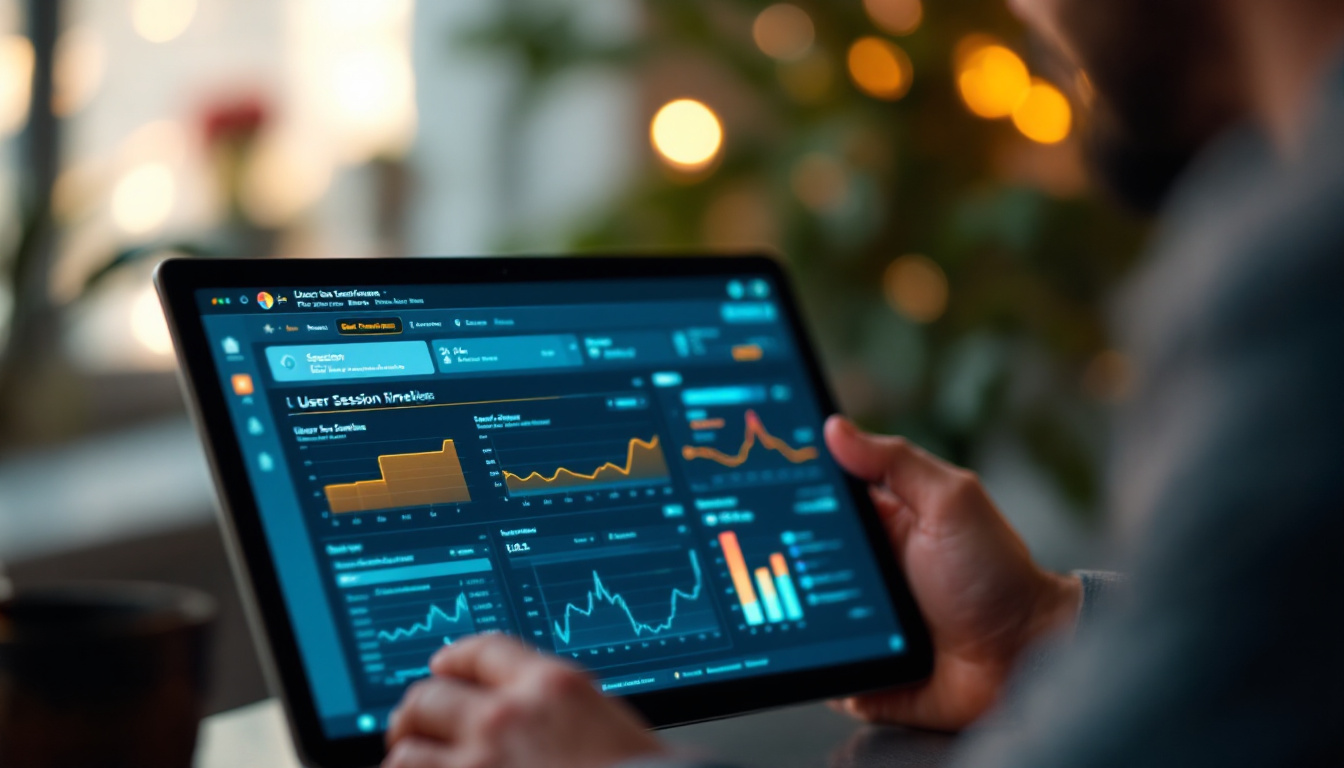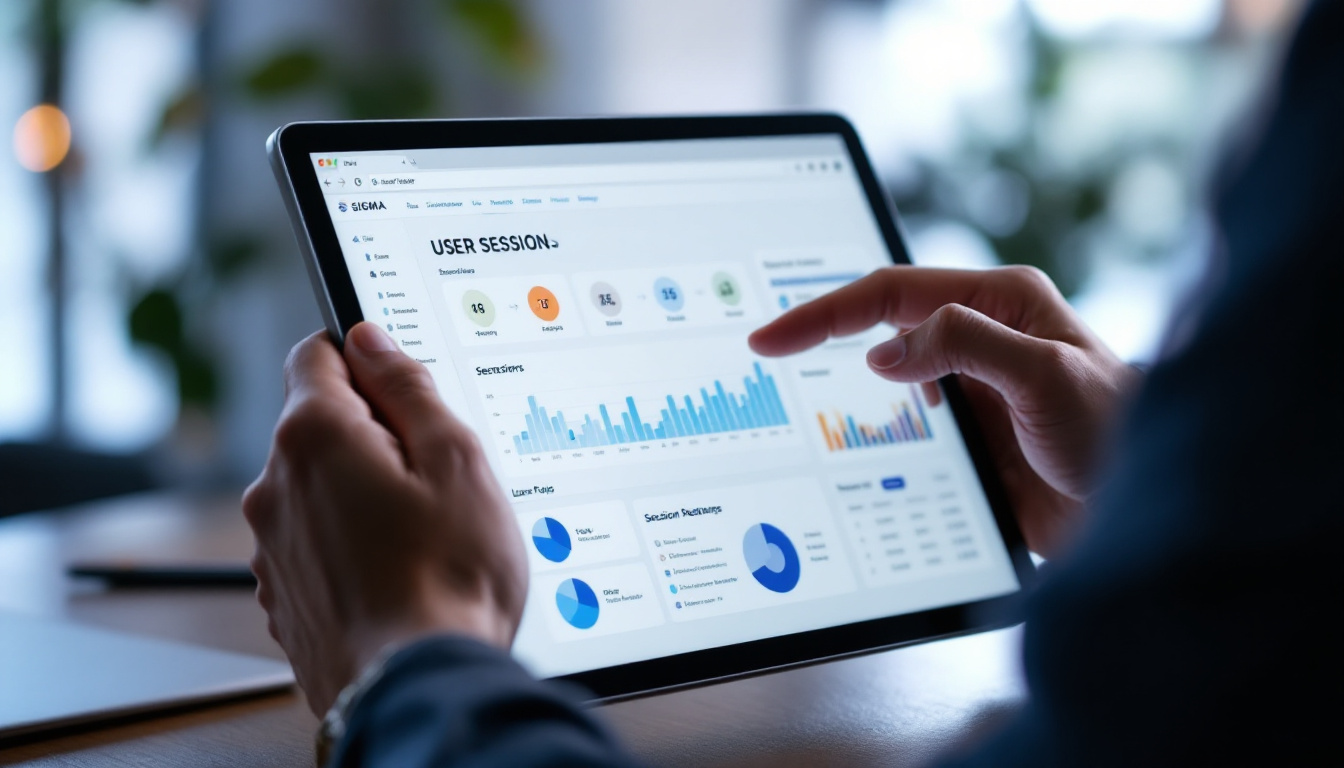What is user session analysis?
The term ‘user session analysis’ is a critical concept that refers to the process of analyzing the behavior of users during a single session on a website or application. This analysis provides valuable insights into user behavior, interaction patterns, and overall user experience. It is a key tool for marketers to understand how users interact with their digital platforms and to make data-driven decisions to improve user engagement and conversion rates.
Understanding user session analysis requires a deep dive into various aspects of digital marketing, web analytics, user behavior, and data analysis. This article aims to provide an in-depth understanding of user session analysis, its importance, how it works, its benefits, and how it can be effectively used in marketing strategies.
Understanding User Sessions
A user session, in the context of web analytics, refers to the period during which a user is actively engaged with a website or application. This session starts when a user visits the site or app and ends when the user leaves or after a period of inactivity, typically 30 minutes. Each user session is unique and can involve multiple page views, events, and interactions.

The duration of a user session can provide valuable insights into user engagement. For instance, longer sessions may indicate that users are finding the content engaging and are spending time exploring the site or app. Conversely, short sessions may suggest that users are not finding what they are looking for or are having difficulty navigating the site or app.
Session Timeout
Session timeout is a critical aspect of user sessions. It refers to the period of inactivity after which a session is considered ended. The standard session timeout is typically 30 minutes, but this can be adjusted based on the nature of the website or application. For instance, sites with longer content, like educational platforms, may have longer session timeouts.
Understanding session timeout is important for accurate session tracking and analysis. If the session timeout is too short, it may result in overestimating the number of sessions and underestimating the session duration. Conversely, if the session timeout is too long, it may result in underestimating the number of sessions and overestimating the session duration.
The Process of User Session Analysis
User session analysis involves collecting, processing, and analyzing data related to user sessions. This data can include the number of sessions, session duration, pages viewed during a session, events triggered during a session, and more. The analysis can provide insights into user behavior, user engagement, and the effectiveness of the site or app design.

The process of user session analysis typically involves the following steps: data collection, data processing, data analysis, and reporting. Each of these steps is critical and requires careful planning and execution to ensure accurate and meaningful results.
Data Collection
Data collection is the first step in user session analysis. This involves tracking user sessions and collecting data related to these sessions. This can be done using various tools and technologies, such as cookies, log files, and web analytics tools. The data collected can include session start and end times, pages viewed, events triggered, and more.
It’s important to ensure that the data collection is accurate and comprehensive. Inaccurate or incomplete data can lead to misleading results and incorrect conclusions. Therefore, it’s crucial to use reliable tools and technologies for data collection and to regularly check and validate the collected data.
Data Processing
Once the data is collected, the next step is data processing. This involves cleaning the data, organizing it, and preparing it for analysis. This can include removing irrelevant or erroneous data, grouping data by sessions, calculating session durations, and more.
Data processing is a critical step in user session analysis. It ensures that the data is accurate, relevant, and ready for analysis. It also helps to reduce the complexity of the data and makes it easier to analyze and interpret.
Data Analysis
Data analysis is the core of user session analysis. This involves analyzing the processed data to extract meaningful insights and patterns. This can include analyzing the number of sessions, average session duration, most viewed pages, most triggered events, and more.
Data analysis can be done using various statistical and analytical techniques, such as descriptive statistics, trend analysis, correlation analysis, and more. The choice of techniques depends on the nature of the data and the objectives of the analysis.
Reporting
The final step in user session analysis is reporting. This involves presenting the results of the analysis in a clear and understandable manner. This can include creating reports, dashboards, charts, and graphs that highlight the key findings and insights.
Reporting is crucial for communicating the results of the analysis to stakeholders and decision-makers. It helps to translate the complex data and analysis into actionable insights and recommendations.
Benefits of User Session Analysis
User session analysis offers numerous benefits for marketers and businesses. It provides valuable insights into user behavior and engagement, helps to identify issues and opportunities, and supports data-driven decision making.
Some of the key benefits of user session analysis include improving user experience, increasing conversion rates, optimizing marketing strategies, and enhancing overall business performance.
Improving User Experience
One of the main benefits of user session analysis is that it can help to improve user experience. By analyzing user sessions, marketers can understand how users interact with their site or app, what they like and dislike, what issues they encounter, and what improvements they desire.
This understanding can be used to make improvements to the site or app design, content, navigation, and functionality, thereby enhancing the user experience. Improved user experience can lead to increased user satisfaction, loyalty, and advocacy.
Increasing Conversion Rates
User session analysis can also help to increase conversion rates. By analyzing user sessions, marketers can identify the paths that lead to conversions and the factors that influence conversion rates. They can then optimize these paths and factors to increase the likelihood of conversions.
For instance, if the analysis reveals that users who view a certain page or trigger a certain event are more likely to convert, marketers can focus on promoting that page or event to increase conversions. Similarly, if the analysis reveals that certain issues or barriers are preventing conversions, marketers can work to resolve these issues or remove these barriers.
Optimizing Marketing Strategies
Furthermore, user session analysis can support the optimization of marketing strategies. By analyzing user sessions, marketers can gain insights into the effectiveness of their marketing efforts and identify areas for improvement.
For example, if the analysis reveals that certain marketing channels or campaigns are driving more sessions or longer sessions, marketers can allocate more resources to these channels or campaigns. Similarly, if the analysis reveals that certain user segments are more engaged or more likely to convert, marketers can target these segments more effectively.
Enhancing Business Performance
Finally, user session analysis can contribute to enhancing overall business performance. By improving user experience, increasing conversion rates, and optimizing marketing strategies, businesses can increase their revenue, profitability, and market share.
In addition, by fostering a data-driven culture and making decisions based on user session analysis, businesses can enhance their agility, competitiveness, and sustainability.
Challenges in User Session Analysis
While user session analysis offers numerous benefits, it also presents several challenges. These challenges can include data quality issues, data privacy concerns, technical complexities, and resource constraints.

Overcoming these challenges requires a combination of technical expertise, strategic planning, and effective management.
Data Quality Issues
Data quality is a common challenge in user session analysis. This can include issues such as inaccurate data, incomplete data, inconsistent data, and outdated data. These issues can lead to misleading results and incorrect conclusions.
To address data quality issues, it’s important to use reliable tools and technologies for data collection, to regularly check and validate the collected data, and to apply robust data cleaning and processing techniques.
Data Privacy Concerns
Data privacy is another major challenge in user session analysis. Collecting and analyzing user session data involves handling sensitive user information, which can raise privacy concerns. These concerns can be exacerbated by the increasing regulations and standards on data privacy, such as the General Data Protection Regulation (GDPR).
To address data privacy concerns, it’s crucial to comply with all relevant regulations and standards, to obtain user consent for data collection and analysis, to anonymize and secure the collected data, and to be transparent about how the data is used.
Technical Complexities
Technical complexities can also pose challenges in user session analysis. These can include complexities related to data collection, data processing, data analysis, and reporting. These complexities can be daunting, especially for businesses with limited technical expertise or resources.
To overcome technical complexities, it’s beneficial to leverage advanced tools and technologies, to seek external expertise or partnerships, and to invest in training and capacity building.
Resource Constraints
Finally, resource constraints can be a challenge in user session analysis. Conducting a comprehensive user session analysis requires significant time, effort, and resources. This can be a hurdle for businesses with limited resources or competing priorities.
To manage resource constraints, it’s helpful to prioritize the most critical aspects of user session analysis, to automate as much of the process as possible, and to consider outsourcing or partnering with external providers.
Conclusion
User session analysis is a powerful tool for marketers and businesses. It provides valuable insights into user behavior and engagement, supports data-driven decision making, and contributes to improving user experience, increasing conversion rates, and enhancing business performance.
While it presents several challenges, these can be effectively managed with the right strategies and resources. By embracing user session analysis, businesses can gain a competitive edge in the digital age and achieve their marketing and business objectives.
